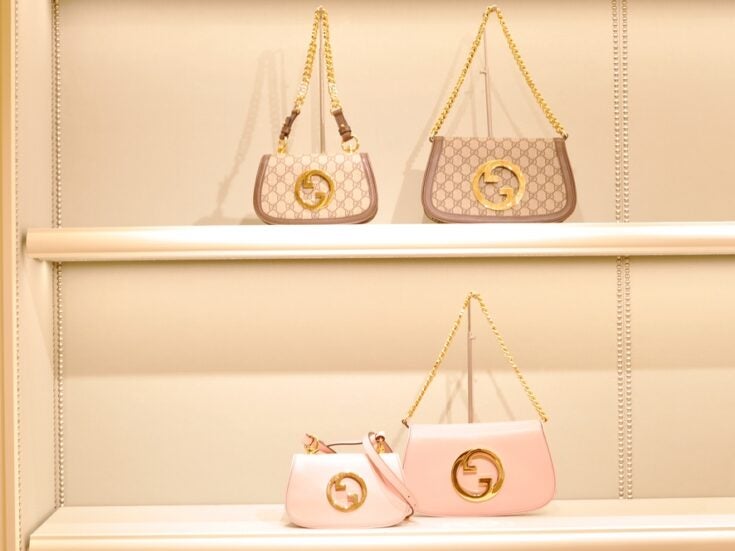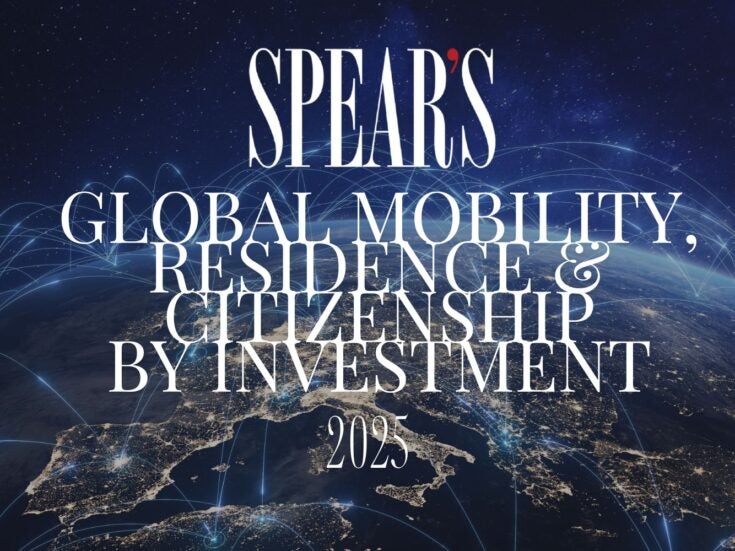Carbon Credit Josh Spero sees every facet of the diamond business in Antwerp when he goes to visit Alexander Dayekh and hear how his company and the industry are shaping up for the 21st century
Carbon Credit
Josh Spero sees every facet of the diamond business in Antwerp when he goes to visit Alexander Dayekh and hear how his company and the industry are shaping up for the 21st century
THE PRICE, FOR a start: rough diamonds went up 29 per cent in 2011, according to De Beers, after galloping increases in previous years. The people too: Antwerp used to have 17,000 polishers but now has 300; India, by contrast, has 800,000 (although this may fall following the government’s 2 per cent diamond import levy). The technology and indeed the entire marketplace are changing, entering the 21st century — if rather belatedly.

Novelty is very much on Alexander Dayekh’s mind over lunch at Le Cigale d’Argent in Antwerp, a few minutes’ walk from the glorious railway station (a proper cathedral to locomotion) and just up the street from his shop in the Empire Centre. Inside its dark grey walls, diamond folk glitter and gleam over beef carpaccio and the soundtrack — like in every restaurant in continental Europe — is Nineties British, this time Dido’s lovelorn plaints.
Even before we order, Dayekh is drawing a contrast between gold and diamonds, not least the ease of storage: €1 million in gold is 25 kilograms, but in diamonds it is 2 grams. Having seen Dayekh at a party in London, where he was carrying his D-brilliant cut diamond (on which more later), it is clear that diamonds are your portable portfolio. The similarities are numerous too: gold and diamond prices benefit from a flight to safety, from the rise of Asian consumption, from the limited supply. (Indeed, no productive diamond mine has been found in the past decade.) His pitch to investors is ‘Carbonise your liquids!’, which is charming in the way that it suggests both diamonds and charcoal.

But surely gold has a much more liquid market than diamonds? There is much less clarity (pun unintended) about the price of diamonds too. Dayekh looks like he’s about to play a trump card — and he does. ‘Two weeks ago we had a conference here with the governor, the mayor, all the stakeholders of the industry and they’ve come up with the Masterplan 2020. They’re talking about a lot of very big changes.
‘We have four stock exchanges in Antwerp, four separate ones, and each specialises in their own domain. Those are being fused, so all four bourses will be one big gigantic bourse. They’re talking about creating an electronic trading platform, again making it more open and more transparent. It’s happening here. It’s much more transparent on prices. Right now, if I ask you the price of a diamond, you cannot go online and look it up. There’ll be one index. This has never been done before.

‘Diamonds are the only commodity not present on the stock market — you can buy rice, coffee, copper, gold, silver — anything except diamonds. Too many colours, too many purities, too many sizes — there are too many factors giving too many prices.’ But with its Masterplan 2020, Antwerp will accommodate this: within the next few years, we will have a diamond price index. As positive as this is, they have also mooted futures and derivatives contracts on diamonds, which tends to worry — nothing invites disaster like speculation.
OVER VITELLO TONNATO and ravioli with white asparagus, we talk about Belgium, its flaws and faultlines. Dayekh was born in Belgium after his father, who panned for his first diamonds in Sierra Leone, fled the civil war in his native Lebanon. His father, in Dayekh’s telling, arrived at the Belgian Embassy in Paris and laid out a bagful of diamonds in front of the consul — not as a bribe but as capital.
He set up shop in Antwerp — it is being expanded to incorporate the workshop and design studio too — and his son, despite speaking five languages (we practise my nascent Arabic), is clearly attached to the country. If Belgium had split into French- and Flemish-speaking sides, as seemed possible during its recent government-less period, it would have been ‘terrible. You’re the political capital of the European Union and you can split? What does that say for the rest of Europe? You destroy the entire concept.’
What will drive Europe out of its current malaise, he thinks, is a second industrial revolution, where Europe develops sophisticated new technologies and wins back ground from Asia. He talks about necessity and invention, and in the diamond district proper, two square kilometres around Hoveniers Straat, which we toured after lunch, the invention was clear.
In one workshop, I looked through a panel on a machine and saw a rough diamond in a vice being cut by a laser. A tiny spot of light swung across the diamond’s surface, etching away. It was all orange until the owner of the workshop lifted the panel away and the acid green of the laser flooded out. I too intently focused on the laser and ended up with a green spot on my retina for the next few hours.

The workshop owner took us through into the front office, where he demonstrated another technological wonder. Whereas before a certain amount of imagination and luck was required in assessing how much you could get out of a rough stone, now machines can scan them, flag up any inclusions or flaws and calculate the largest possible cut stone you can get from your chunk. The different possibilities flash up on the screen like a scene from a gemmological Minority Report. As Dayekh’s brother remarked, they’re not perfect, but an e-glance inside a diamond must be infinitely preferable to a gradual excavation.
Traditional skills are still much in demand. On the way back to his shop, Dayekh went into a lab where Annette was boiling in acid cut stones in glass pans on hotplates, the best way to remove all the grease. We also stopped in at a workshop where men sat at two rows of desks, grinding diamonds on a metal disc that revolved so fast it didn’t seem to be moving at all. The tech seemed anything but high: odd long clamps which looked like they had been put together in a garage grasped the diamonds and when the cutter had put it in the correct position to cut a facet on the disc, he secured it with a lump of lead. No one spoke. The only sounds were the whines of varying pitches from the grinding, and if you closed your eyes you could just as easily have been at a car mechanic’s as in a diamond-cutting workshop.
You would think, naturally, that with the potential of computers, scientists would be designing newer and better diamond cuts for these men to work on (or indeed replacing them altogether). After all, it was nearly a century ago that an engineer, Marcel Tolkowsky, came up with the now-ubiquitous 57-facet American Standard by mathematically calculating which cut would maximise brilliance (white light that shines through the top of a diamond), fire (the spectrum of colours the light is split into) and scintillation (‘the bling effect’). However, thus far computers have not been significantly set to work on developing a better diamond, meaning that wherever you buy your diamond, a round brilliant is the same. New cuts have been developed but none have been improvements.

Ironically, the new and improved diamond — Daykeh’s D-brilliant cut (pictured left) — was a product of thought and experience, those old hands. One of Dayekh’s friends, an opera singer called Hedwig Smets, would cut shapes out of curiosity and invention and show them to Dayekh. ‘One day he comes in with the D-brilliant cut, with the lotus-flower pattern in there — absolutely gorgeous. I completely fell in love with it. We did everything the legal way, I bought the idea from him, I continue to acknowledge him as the inventor of this stone.’ In testing at the light performance lab, the D-brilliant cut got maximum scores, and the round version, the premium D-brilliant, ‘took the fire indicator off the charts — it broke light into more frequencies’. There may be only 300 polishers left in Antwerp, he says triumphantly, but let’s see how long it takes Asia to develop anything like that.
It seems that in a relatively closed community like Antwerp’s diamond dealers there might have been a subdued, if not hostile, reaction to the D-brilliant cut, which is quite captivating when presented to you, but Dayekh says others responded with a craftsman’s respect for achievement rather than a rival’s jealous scorn. This fellowship is borne out as we walk down Hoveniers Straat, a grey canyon of diamond dealers, cutters, polishers, traders, certifiers, transporters and protectors, and Dayekh greets and is greeted by countless others.
As beneficial as technology is proving, it didn’t bring Dayekh the D-brilliant cut and he won’t welcome the human redundancy and the bland omniscient triumph it can deliver. ‘We need to take some serious measures to bring new blood into this trade, this craft. It’s a very special feeling when you’re holding a rough and it’s covered with this coating, you can’t really see the inside yet, and you have to make a bid on it.’ He pauses. ‘You’re not really sure of the colour or the purity. There’s a bit of a gamble, but that’s the adrenaline part of our business. Then you start to cut it, make little windows to peek inside, you start really deciding how you’re going to cut the stone and you start that process and you see it growing facet by facet, and when it’s finished, you think, “I made that.” It was this and now it’s that.’ Which computer can feel that satisfaction?
dayekh.com
Josh Spero is Spear’s editor






